Brighton Festival: A Journey Back | reviews, news & interviews
Brighton Festival: A Journey Back
Brighton Festival: A Journey Back
Andrew Comben chooses highlights from his time as CEO of the Brighton Festival
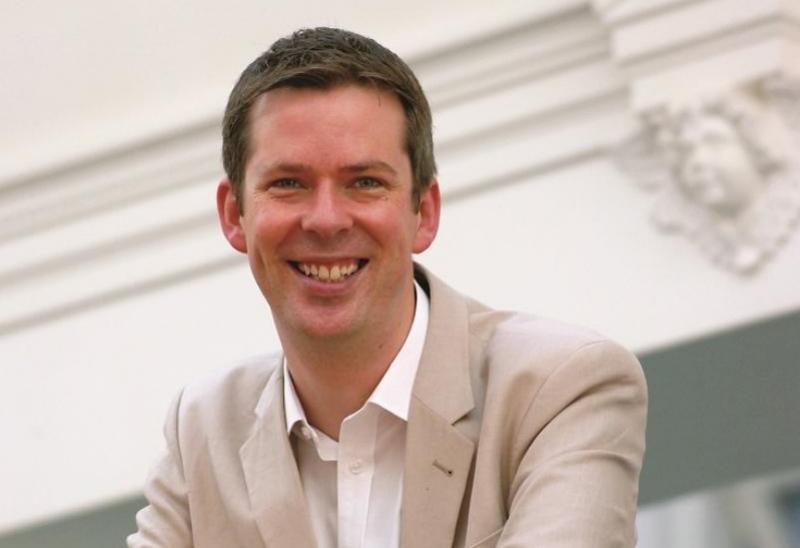
Andrew Comben, CEO of the Brighton Festival, has agreed to reveal to theartsdesk his favourite moments from previous Festivals. “Looking backwards,” he ventures, sat in his office around the corner from the Pavilion, “is not a luxury I tend to indulge in as my head is so focused on this year, next year and 2016. Then again, it’s an enjoyable wrench, a fun exercise."
Comben, 40, took the position in 2008, having previously worked with Wigmore Hall and the Aldeburgh Festival. “I was a horn player and singer.” he says, “I left that side of my life behind me but I like to feel it gives me some connection to what artists go through and gives me a respect for it.” He also oversees the Brighton Dome complex of venues all year round, home to 90 full time employees, and is in charge of “the logistical and financial planning that goes alongside the artistic.”
His time at the Dome has coincided with that of Hofesh Schechter, whose dance company has been resident for five-and-a-half years and who is this year’s Festival guest director. Comben enthuses about 2014 highlights such as Schechter’s Sun, the William Forsyth installation Nowhere and Everywhere at the Same Time No.2, and Russian theatre director Dmitry Krymov’s Opus No.7 but now we must drag him back, back to the past,. year by year…
Britten’s Canticles - 2013
It was the year [children’s laureate] Michael Rosen was Guest Director. Neil Bartlett and Paule Constable put Britten’s Canticles together with a range of artists, an extraordinary cast of musicians. We worked with Aldeburgh Music on it for Britten’s centenary. It was in the Theatre Royal. Such works are often performed in a concert hall with a classical music audience who appreciate the work, but we had a theatre dance and visual arts audience as well, and I guarantee at least half of them had never heard that music before. The Brighton Festival can entice you on the sliver of promise to an event, then deliver something quite unexpected. What we try to do is create connections between events, art-forms and people.
My Life After - 2013
This is a piece by Argentinian theatre director Lola Arias. I’m choosing it for two reasons. First, the piece itself was so special, based on the real life experiences of people through the Argentinian Junta and telling the stories of their lost parents and, in a sense, their lost generation. But I also choose it because it was one of the foreign language theatre pieces that really connected with audiences. Foreign language theatre is difficult in the UK but hopefully becoming more palatable after the success of BBC4 and The Killing. We’ve been building an audience for experiences that aren’t in English. We have surtitles that I know will work really well with Dmitry Krymov’s Opus No.7.
Land’s End - 2012
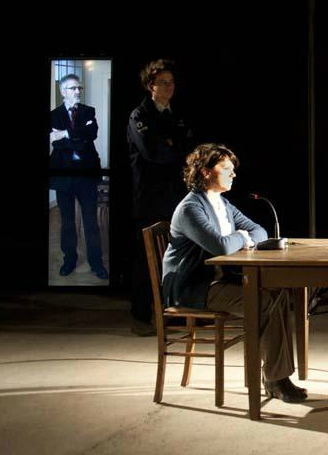 This is a piece by a Belgian theatre company, not very helpfully called Berlin. In 2012 we co-commissioned their piece Land’s End (pictured left) which was based on a true story, a murder that had occurred around the border of Belgium and France that threw up all sorts of issues on a bureaucratic level but also in terms of nationalism and identity. It was presented in a very unusual way with new technology, video work and installations. They’re coming back this year with two pieces. One is a new work, Perhaps All the Dragons, which again looks at verbatim stories about 30 people who have encountered a special moment of memory and loss of memory, a very particular experience that people will have one-on-one with a video screen. The other is a piece called Bonanza that looks at a town in the middle of nowhere in Colorado in the US.
This is a piece by a Belgian theatre company, not very helpfully called Berlin. In 2012 we co-commissioned their piece Land’s End (pictured left) which was based on a true story, a murder that had occurred around the border of Belgium and France that threw up all sorts of issues on a bureaucratic level but also in terms of nationalism and identity. It was presented in a very unusual way with new technology, video work and installations. They’re coming back this year with two pieces. One is a new work, Perhaps All the Dragons, which again looks at verbatim stories about 30 people who have encountered a special moment of memory and loss of memory, a very particular experience that people will have one-on-one with a video screen. The other is a piece called Bonanza that looks at a town in the middle of nowhere in Colorado in the US.
King Priam - 2012
This is Tippett’s opera and we had a concert performance with the Britten Sinfonia and a wonderful cast of singers. It connected to a whole range of work that Vanessa Redgrave, that year’s guest director, had inspired, particularly looking at Greek and Roman myth and the power of those stories right through the ages. It was also the 50th anniversary of that first performance by Tippett in Coventry and it tells, in quite a visceral way, of the experience and horror of war. It’s also an opera that’s rarely performed, but has happily now gone on tour with the English Touring Opera. It was seen on stage for the first time in a long time at the Brighton Festival. There’s a performance this year that feels to me like an echo of this - Harrison Birtwhistle’s Down by the Greenwood Side which the Brighton Festival commissioned in 1969. If you look back over the last 48 years there have always been moments when the Brighton Festival has plucked an artist from a new pool, artists just becoming known rather than established.
Izzeldin Abuelaish - 2011
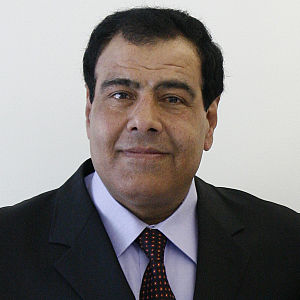 Aung San Suu Kyi directed the Festival from afar in 2011 so we had an absent guest director who was incredibly inspirational. We had a lot of talks and debates that looked at personal liberty and human rights. Izzeldin Abuelaish (pictured right) was a particularly special Festival visitor. He’s an author and Gaza-based gynaecologist who watched his family being attacked [and three daughters killed] by Israeli missiles. He went on television straight away and basically forgave the people who’d been a party to it and wrote a book called I Shall Not Hate. I think he really encapsulated the festival’s themes that year in an extraordinary and very special talk in the Concert Hall. It was really moving to hear him relate his story and talk about the kind of steps that need to be taken.
Aung San Suu Kyi directed the Festival from afar in 2011 so we had an absent guest director who was incredibly inspirational. We had a lot of talks and debates that looked at personal liberty and human rights. Izzeldin Abuelaish (pictured right) was a particularly special Festival visitor. He’s an author and Gaza-based gynaecologist who watched his family being attacked [and three daughters killed] by Israeli missiles. He went on television straight away and basically forgave the people who’d been a party to it and wrote a book called I Shall Not Hate. I think he really encapsulated the festival’s themes that year in an extraordinary and very special talk in the Concert Hall. It was really moving to hear him relate his story and talk about the kind of steps that need to be taken.
Before I Sleep - 2010
Site specific events at the Brighton Festival tend to happen partly by design and partly by necessity. We don’t have enormous venues. The Dome and the Corn Exchange are the largest venues so when you look to creating other sorts of experiences you have to be slightly more imaginative. Brighton has some very unusual places, some really seedy, some really exotic, and in 2010 when Brian Eno was Guest Director our resident company Dream Think Speak created the work Before I Sleep performed in the old Co-op building on London Road which is just now being completely rebuilt but at the time was an abandoned department store. Across the floors of it the director Tristan Sharps created one of our most popular pieces ever. Some 24,000 people saw it. Inspired by Chekhov’s The Cherry Orchard, it gave visitors to the festival an experience unlike anything they’d encountered before, very direct, very intimate but with real scale and ambition. Tristan created the most extraordinarily detailed performances with tiny models that then became huge sets. You entered through the loading dock of the department store, then were free to wander wherever but led subtly through the floors into a madcap experience, from a Soviet-style shop to an auction going on to a cut-down forest on one floor, an incredibly powerful image that left you bereft with a sudden sense of what we’re doing to the world environmentally, all of it traceable, if you were minded to, back to parts of The Cherry Orchard. It lives on in my memory
77 Million Paintings - 2010
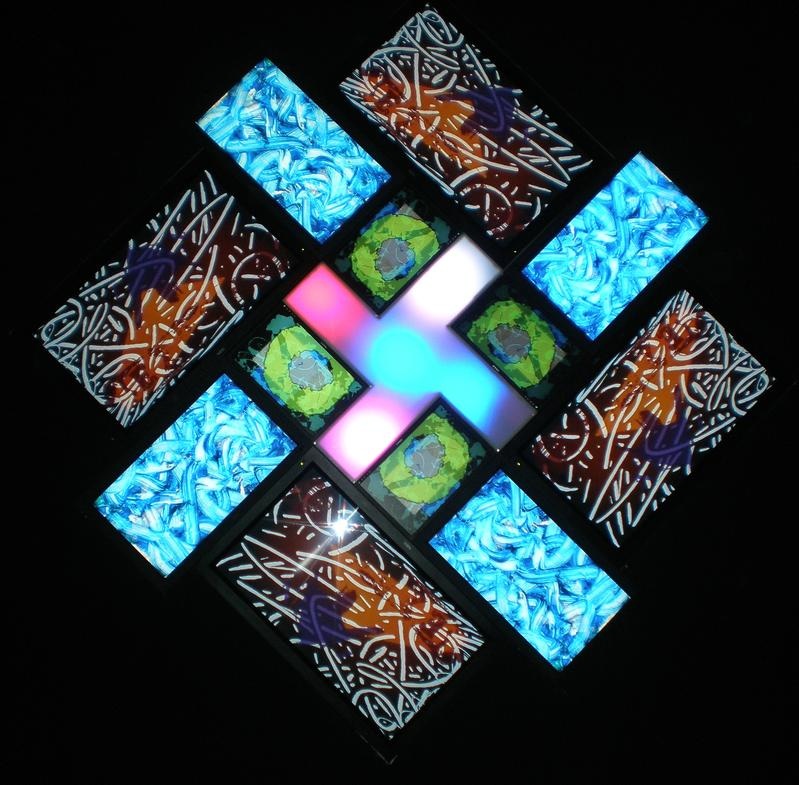 People would go and sit for four hours watching this digital installation of completely randomly selected patterns pre-designed by Brian Eno. It really taught me about the power of a having a centrepiece to the Festival. What’s really lovely is we have a new hospital that’s set up a set-up a 77 Million Paintings installation, particularly for cancer patients and people going through palliative care, to try and encourage the sorts of meditative techniques it proposes.
People would go and sit for four hours watching this digital installation of completely randomly selected patterns pre-designed by Brian Eno. It really taught me about the power of a having a centrepiece to the Festival. What’s really lovely is we have a new hospital that’s set up a set-up a 77 Million Paintings installation, particularly for cancer patients and people going through palliative care, to try and encourage the sorts of meditative techniques it proposes.
Political Mother - 2010
Hofesh Schechter’s Political Mother has gone all round the world since being premiered here. It combined everything Hofesh has become famous for – scale, musicianship, that huge range of drummers that suddenly appear and knock you over, then to pull the rug from under you in the way only Hofesh can, the Joni Mitchell track which leaves you wasted at the end of the piece. As Hofesh says, there’s never a singular narrative to his work but it’s absolutely a bombardment of emotion. What’s been so exciting is to see his next response – Sun. It’s in a complete other direction to Political Mother while retaining all the hallmarks of his work.
Sea Curve - 2009
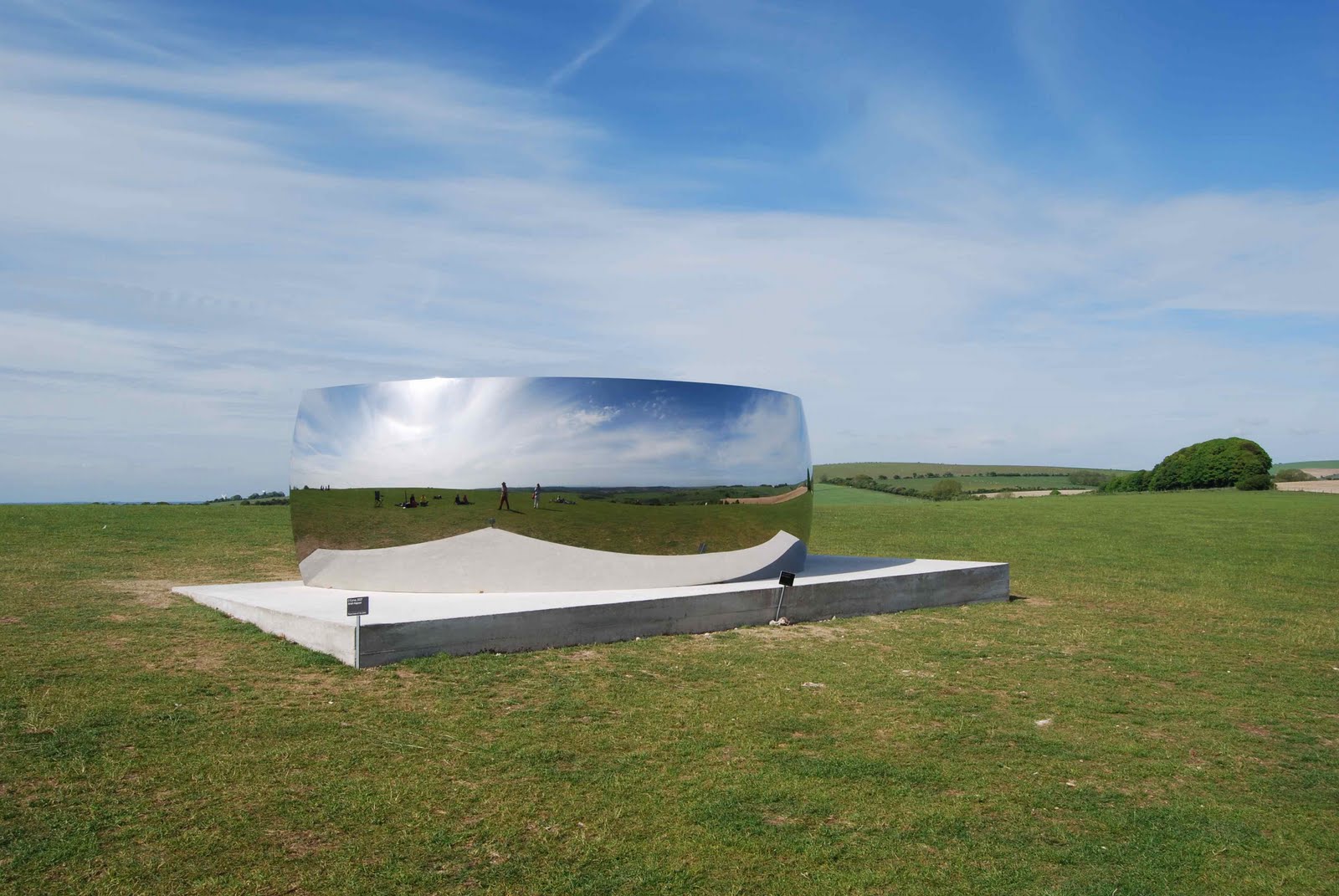 My first Festival was with Anish Kapoor as Guest Director. I particularly loved Sea Curve on the South Downs (pictured right). It’s still possibly the most romantic thing I’ve been associated with. He installed this 24 meter concave mirror on a concrete plinth on top of the Downs in juxtaposition with the Chattri Memorial for the Hindu soldiers hospitalised at the Royal Pavilion in the First World War [the Chattri marks the cremation site of those who died]. It looked over Brighton in quite a magical way. We had to have an ocular survey done to make sure it didn’t fry the sheep that grazed around it. 14,000 made the mile-and-a-half trek up the hill. It was immediately taken to people’s hearts. We had really high winds, up to 80 miles-an-hour winds and it was in an exposed position. Completely voluntarily and spontaneously people camped out round it to make sure it was OK, Tweeting and Instagramming pictures of it.
My first Festival was with Anish Kapoor as Guest Director. I particularly loved Sea Curve on the South Downs (pictured right). It’s still possibly the most romantic thing I’ve been associated with. He installed this 24 meter concave mirror on a concrete plinth on top of the Downs in juxtaposition with the Chattri Memorial for the Hindu soldiers hospitalised at the Royal Pavilion in the First World War [the Chattri marks the cremation site of those who died]. It looked over Brighton in quite a magical way. We had to have an ocular survey done to make sure it didn’t fry the sheep that grazed around it. 14,000 made the mile-and-a-half trek up the hill. It was immediately taken to people’s hearts. We had really high winds, up to 80 miles-an-hour winds and it was in an exposed position. Completely voluntarily and spontaneously people camped out round it to make sure it was OK, Tweeting and Instagramming pictures of it.
Rossini's Cantata Giovanni D'Arco performed inside Anish Kapoor's The Dismemberment of Jeanne d’Arc - 2009
A completely powerful experience on a very small scale. It set a tone for sorts of things I wanted to be able to do in Circus Street. Kapoor’s new work, The Dismemberment of Jeanne d’Arc, was this huge, very red, bloody installation and inside that we had a performance of Rossini’s Cantata Giovanni D’Arco orchestrated by Sciarrino, basically depicting Joan of Arc at the stake - Rossini has her being burnt alive. That was a really incredible performance of the work, that kind of crossover between classical and something much more experiential. This year we have Strauss’s Metamorphosen being performed by the Philharmonia Orchestra in the same space, where William Forsyths’s installation is. It will have resonances of other performances yet will be completely and utterly different.
Share this article
The future of Arts Journalism
You can stop theartsdesk.com closing!
We urgently need financing to survive. Our fundraising drive has thus far raised £49,000 but we need to reach £100,000 or we will be forced to close. Please contribute here: https://gofund.me/c3f6033d
And if you can forward this information to anyone who might assist, we’d be grateful.

Subscribe to theartsdesk.com
Thank you for continuing to read our work on theartsdesk.com. For unlimited access to every article in its entirety, including our archive of more than 15,000 pieces, we're asking for £5 per month or £40 per year. We feel it's a very good deal, and hope you do too.
To take a subscription now simply click here.
And if you're looking for that extra gift for a friend or family member, why not treat them to a theartsdesk.com gift subscription?
more
 'We are bowled over!' Thank you for your messages of love and support
Much-appreciated words of commendation from readers and the cultural community
'We are bowled over!' Thank you for your messages of love and support
Much-appreciated words of commendation from readers and the cultural community
 Wendy & Peter Pan, Barbican Theatre review - mixed bag of panto and comic play, turned up to 11
The RSC adaptation is aimed at children, though all will thrill to its spectacle
Wendy & Peter Pan, Barbican Theatre review - mixed bag of panto and comic play, turned up to 11
The RSC adaptation is aimed at children, though all will thrill to its spectacle
 Bugonia review - Yorgos Lanthimos on aliens, bees and conspiracy theories
Emma Stone and Jesse Plemons excel in a marvellously deranged black comedy
Bugonia review - Yorgos Lanthimos on aliens, bees and conspiracy theories
Emma Stone and Jesse Plemons excel in a marvellously deranged black comedy
 Cat Burns finds 'How to Be Human' but maybe not her own sound
A charming and distinctive voice stifled by generic production
Cat Burns finds 'How to Be Human' but maybe not her own sound
A charming and distinctive voice stifled by generic production
 Todd Rundgren, London Palladium review - bold, soul-inclined makeover charms and enthrals
The wizard confirms why he is a true star
Todd Rundgren, London Palladium review - bold, soul-inclined makeover charms and enthrals
The wizard confirms why he is a true star
 Photo Oxford 2025 review - photography all over the town
At last, a UK festival that takes photography seriously
Photo Oxford 2025 review - photography all over the town
At last, a UK festival that takes photography seriously
 It’s back to the beginning for the latest Dylan Bootleg
Eight CDs encompass Dylan’s earliest recordings up to his first major-league concert
It’s back to the beginning for the latest Dylan Bootleg
Eight CDs encompass Dylan’s earliest recordings up to his first major-league concert
 Ireland's Hilary Woods casts a hypnotic spell with 'Night CRIÚ'
The former bassist of the grunge-leaning trio JJ72 embraces the spectral
Ireland's Hilary Woods casts a hypnotic spell with 'Night CRIÚ'
The former bassist of the grunge-leaning trio JJ72 embraces the spectral
 Hedda, Orange Tree Theatre review - a monument reimagined, perhaps even improved
Scandinavian masterpiece transplanted into a London reeling from the ravages of war
Hedda, Orange Tree Theatre review - a monument reimagined, perhaps even improved
Scandinavian masterpiece transplanted into a London reeling from the ravages of war
 theartsdesk Q&A: director Kelly Reichardt on 'The Mastermind' and reliving the 1970s
The independent filmmaker discusses her intimate heist movie
theartsdesk Q&A: director Kelly Reichardt on 'The Mastermind' and reliving the 1970s
The independent filmmaker discusses her intimate heist movie
 Emma Doran, Leicester Square Theatre review - domestic life laid bare
Irish comic mixes sentiment and sauciness
Emma Doran, Leicester Square Theatre review - domestic life laid bare
Irish comic mixes sentiment and sauciness
 Lily Allen's 'West End Girl' offers a bloody, broken view into the wreckage of her marriage
Singer's return after seven years away from music is autofiction in the brutally raw
Lily Allen's 'West End Girl' offers a bloody, broken view into the wreckage of her marriage
Singer's return after seven years away from music is autofiction in the brutally raw

Add comment